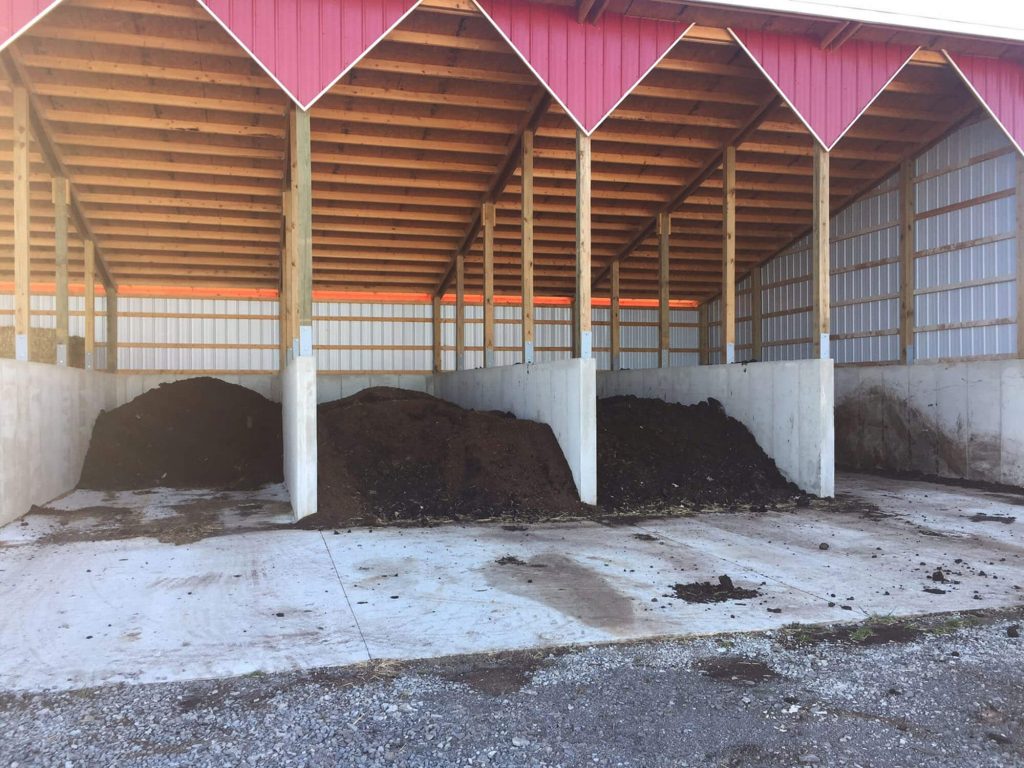What it is
Composting provides a safe and desirable method for disposing of livestock carcasses by converting nitrogenous materials (manure and animals) and carboniferous materials (straw or sawdust) into a humus-like substance.
How it helps
When properly managed, composting substantially reduces the volume of carcasses, kills most pathogens, prevents odors, and produces a stable, odorless, humus-like material that is useful as a nutrient source and soil amendment. By eliminating the on-site burial of large numbers of carcasses, composting facilities reduce the potential of groundwater contamination and protect public health.
Planning ahead
Consider on-farm traffic patterns, wind direction, drainage ditches, sensitive areas, topography and proximity of neighbors in determining where to place the facility. Also, determining an estimated death loss will help to properly size the structure. Producers can work with their local Soil & Water Conservation District/Natural Resources Conservation Service office using Animal Mortality Facility Practice Code 316 Standard and Specification. Ohio Revised Code requires producers also obtain certification prior to composting.
Maintenance
Obtain and follow a written operation and maintenance plan from NRCS. At a minimum, the instructions should detail the materials used in the compost mix, moisture content, temperature to be achieved, aeration schedule and end-use for the compost. The compost facility should be inspected at least twice a year, when empty, for structural integrity.
Videos
Composting can be a cost-effective way to handle mortality on a livestock farm. When properly managed, composting substantially reduces the volume of carcasses, kills most pathogens, prevents odors, and produces a stable, odor-less, humus-like material that is useful as a nutrient source and soil amendment. By eliminating the on-site burial of large numbers of carcasses, composting facilities reduce the potential for groundwater contamination and protect public health.
Photo Gallery
SHARE
Ready to learn more?






